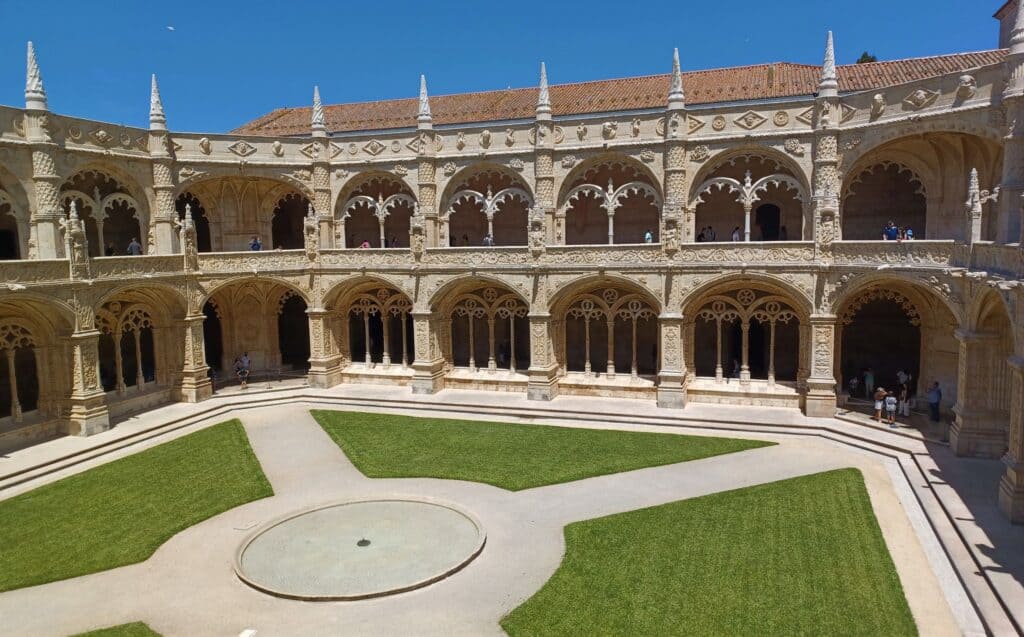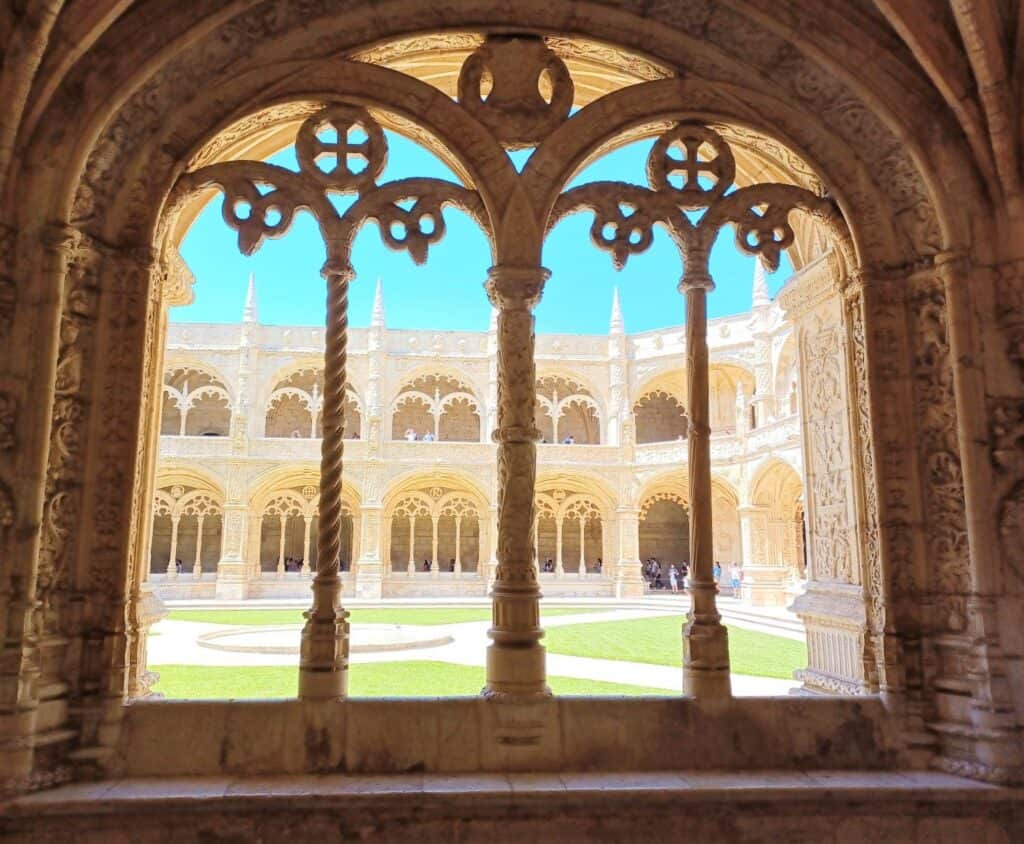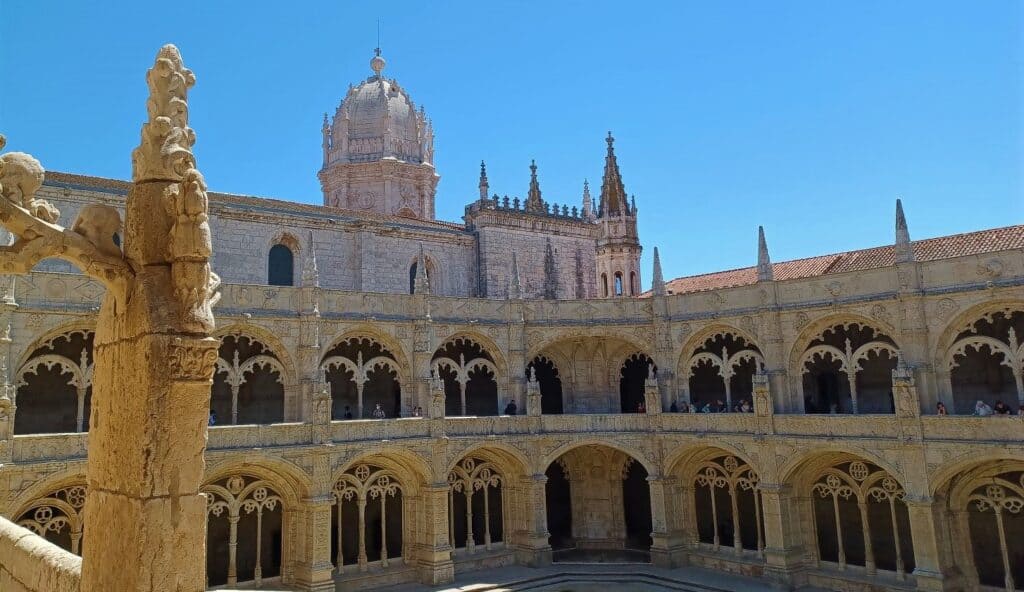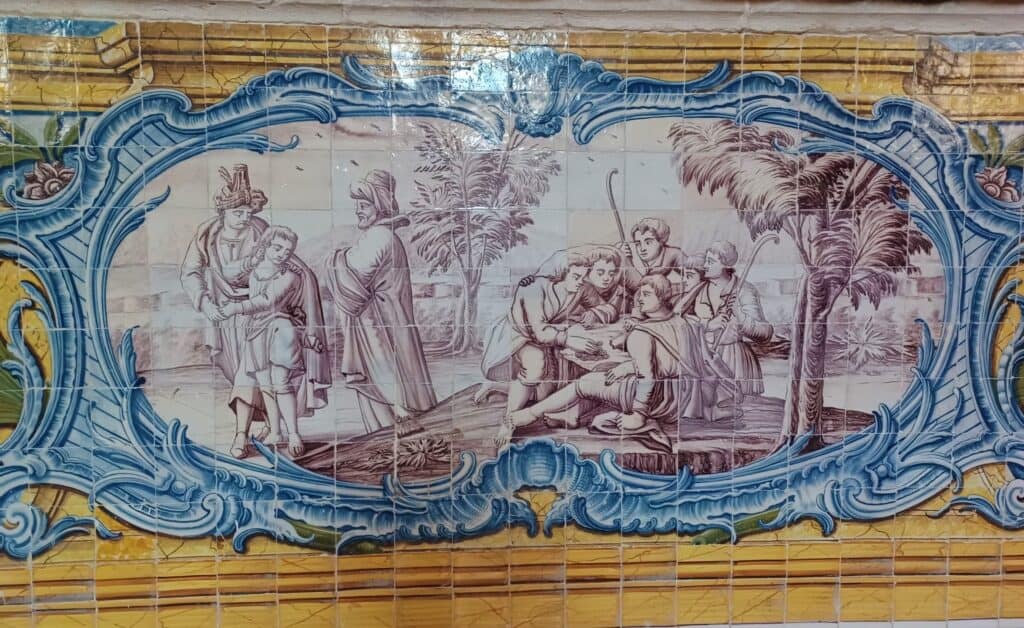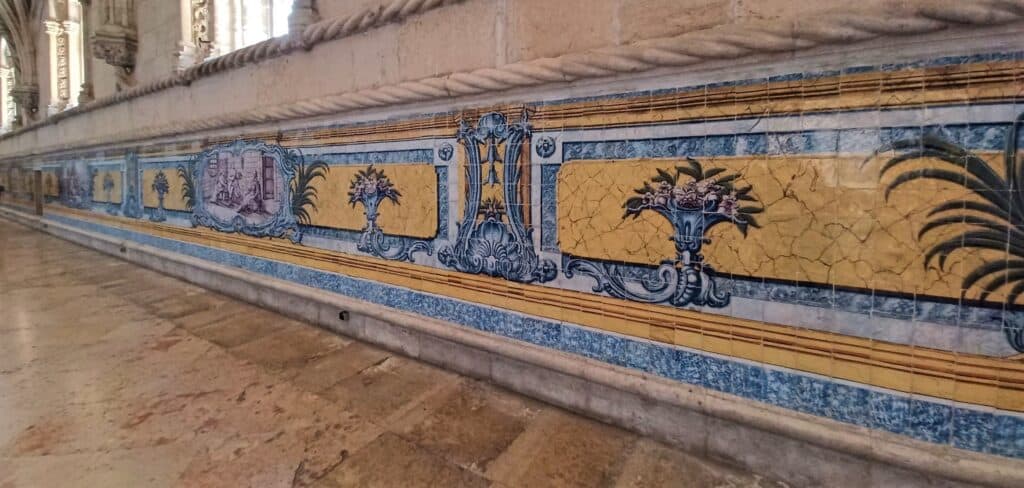Lisbon’s magnificent monastery is a must-visit for anyone coming to the city

Jerónimos Monastery origin story
Portugal, specifically the king and his family, were growing unbelievably wealthy in the early 1500’s thanks to a tax on imported goods from India and other parts of Asia that were entering the country via exploration, trade, and, it should be noted, exploitation of India and other Portuguese colonies.
King Manuel I wanted an elaborate symbol of his wealth as well as a final resting place for himself and his family worthy of his status, so he ordered the construction of the Jerónimos Monastery which began in 1501.
The fanciful structure was built in the Late Gothic style known as Manueline. Hieronymite monks lived in the monastery and their job was to pray for the king as well as the sailors risking their lives on missions for the crown.
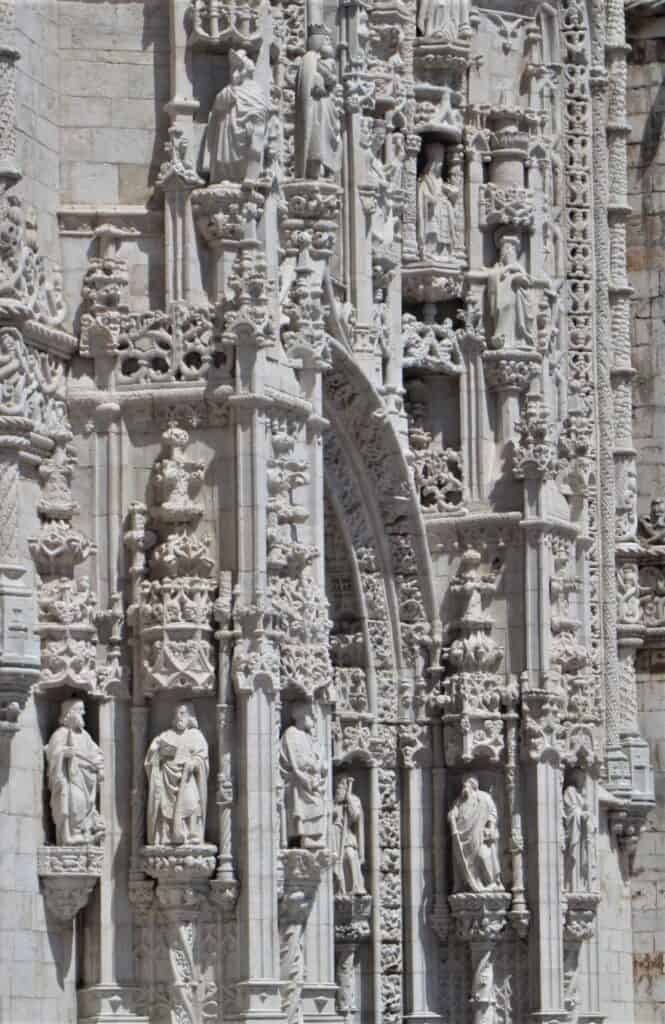
The site of the new monastery is strategic because it is near the waterfront and close to where ships of exploration were launched in Lisbon. The new monastery was to be just feet from the Ermida de Restelo (Hermitage of Restelo) and intended to replace that structure which was, at the time, crumbling. It is also where Vasco de Gama prayed prior to leaving on his famous voyage of 1497 which traveled around the Cape of Good Hope to India.
The Jerónimos Monastery withstood the Lisbon earthquake of 1755 with minimal damage. While most of the Lisbon was leveled, the area around the Belem neighborhood where the Jerónimos Monastery is located was, for the most part, spared.
In 1834, Portugal’s monasteries, convents, and all religious orders were dissolved by government decree and the buildings, including the Jerónimos Monastery, were to be abandoned. However, some monks and nuns were allowed to stay until their death, sometimes many decades later.

The reason for the dissolution of the monasteries was because after Portuguese Civil War, the new constitutional monarchy wanted to redistribute the land and buildings to poorer people in Portugal. This plan backfired since very few people or organizations could take on the cost and responsibility of operating and maintaining a huge monastery.
In the case of the Jerónimos Monastery, it was transferred to Real Casa Pia de Lisboa (Pious Royal House of Lisbon) to be used as a school (albeit, a religious one) for underprivileged children. There is some disagreement as to how successful this particular program was. While there was certainly a school there, it seems that much of the monastery was vacant and left to deteriorate. As a side note, in the early 2000’s, cases of the sexual abuse of children at Casa Pia were reported and eventually Portugal’s first institutional sex abuse cases went to court resulting in many convictions and prison time for the perpetrators.
Renovations regularly took place at the monastery from the mid 19th to the mid 20th century restoring it to its previous granduer.
Visiting the Jerónimos Monastery
Most of Lisbon is walkable, but Belem, where the Jerónimos Monastery is located, is quite a ways from Alfama, Baixa, Barrio Alto, Chiado, or any of the neighborhoods where you’re likely to be staying.
The easiest way to get to Belem is via the #15 Tram (aka E15). Uber and Bolt are also options.
Upon arrival, take some time to admire the Jerónimos Monastery and the ornate Late Gothic exterior built with money from taxes on imported goods from Portugal’s far-flung empire. It’s easy to see how powerful Portugal was during this time by simply looking at the church’s facade. It could take a lifetime to inspect each of the beautifully carved figures and fanciful designs.
Inside the monastery is the tomb of Vasco de Gama, the man whose voyages helped build the vast Portuguese empire. Poet Luís de Camões’ remains are also entombed in the monastery. He wrote famous poems about Vasco de Gama and the so-called Age of Discoveries. And, as was the king’s wish, Manual I and members of his family are interred at the Jerónimos Monastery.
The chapel itself has massive vaulted ceilings typical of Late Gothic churches with intricately decorated columns. Truly a masterwork.
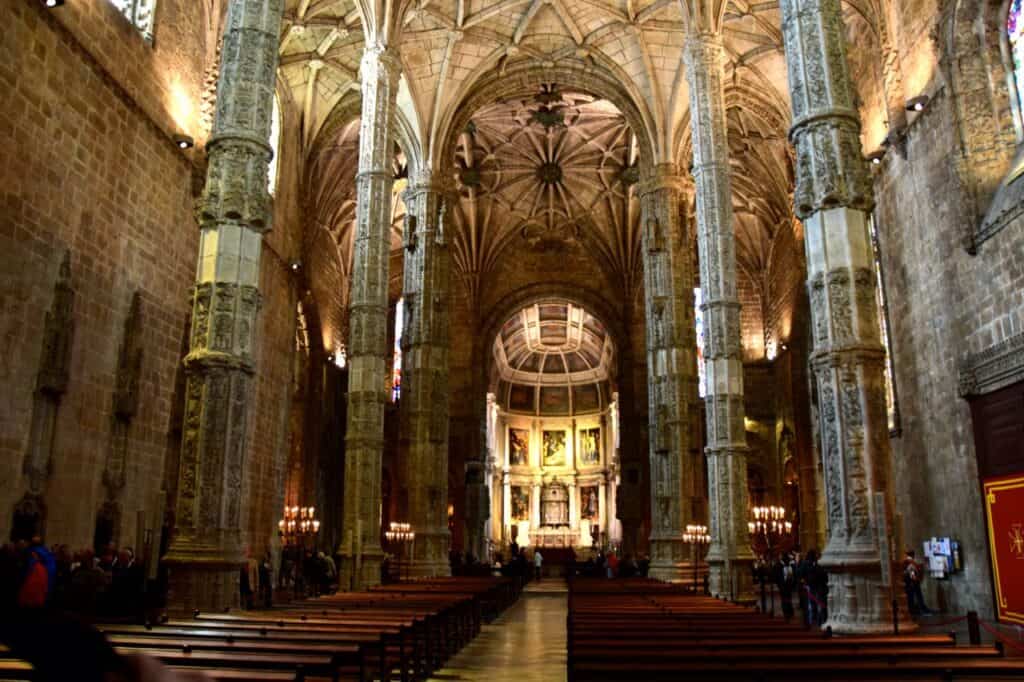
Visiting the Monastery is free (though you may have to wait in line to get in), but if you want to see the cloisters you have to buy a ticket. Cloisters in Portugal normally have a small courtyard, but the one here is much bigger than most. The arches looking out into the courtyard feature magnificent stonework. Notice the nautical themes carved into much of the stone, reflecting Portugal’s naval and navigational prowess.
In the cloister there are also several tombs including poet Fernando Pessoa, playwright Almeida Garrett, writer-historian Alexandre Herculano, and former presidents Teófilo Braga and Óscar Carmona.
The rectory is not to be missed for the azulejo tile murals.
Other Things to do in Belem
Belem is a great neighborhood to spend at least a half day or a full day. Two other top attractions are the Padrão dos Descobrimentos (Monument of the Discoveries) and the Belém Tower. There’s also a popular Carriage Museum in Belem.
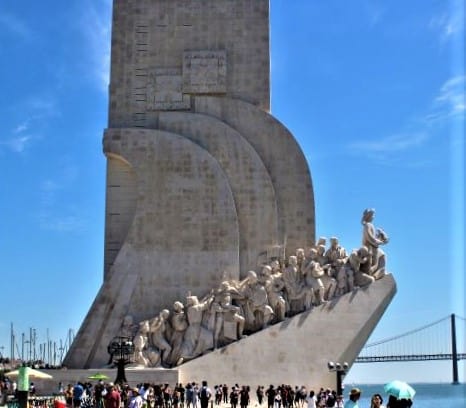
But, for me, the highlight of a trip to the Belem neighborhood is getting a Pastéis de Belém at the bakery where they were first made. Actually, the recipe originated at the Jerónimos Monastery, but when the religious orders were closed in the early 1800s, the recipe was sold to Pastéis de Belém and the same family is still making the famous tarts 200 years later.
This is the only place where these custard treats can be called Pastéis de Belém, everywhere else in Lisbon, they’re Pastel de Nata.
Pro tip: If you’re going to Pastéis de Belém, don’t wait in the long line outside. Go in the side door and get a seat in the cafe. It’s better than standing in the hot sun and the atmosphere inside is delightful.

About the Author

Brent Petersen is the Editor-in-Chief of Destination Eat Drink. He currently resides in Setubal, Portugal. Brent has written the novel “Truffle Hunt” (Eckhartz Press) and the short story collection “That Bird.” He’s also written dozens of foodie travel guides to cities around the world on Destination Eat Drink, including in-depth eating and drinking guides to Lisbon, Porto, Sintra, Monsaraz, and Evora in Portugal. Brent’s podcast, also called Destination Eat Drink, is available on all major podcasting platforms and is distributed by the Radio Misfits Podcast Network.

